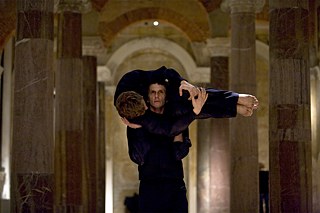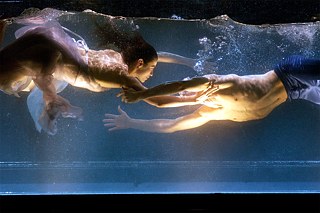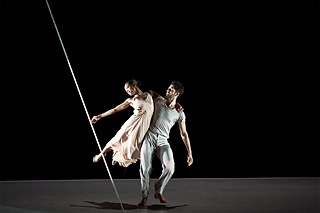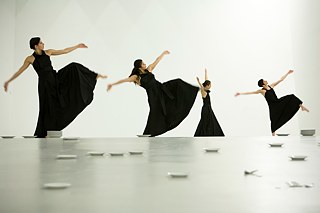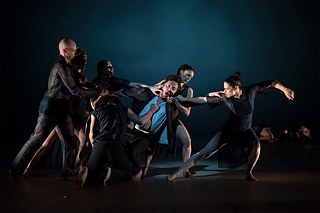Sasha Waltz
The opera choreographer
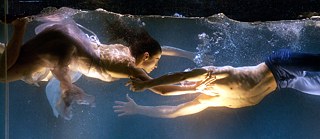
Choreographer Sasha Waltz has added a chapter to the history of dance with choreographic opera. It combines different genres to create dialogue between the disciplines and broaden the audience’s point of reference.
“Dissolving the static“: choreographic opera
In 1993, director Jochen Sandig and Sasha Waltz founded the Sasha Waltz & Guests company that rehearses and often performs in Berlin’s “Radialsystem V” cultural centre. To date a wide range of different artists from around 30 countries have contributed as “guests”, and the company was named “European Cultural Ambassador” by the EU in 2013. Waltz trained in New York and Amsterdam, and the central focus of her work is on choreographic operas. The first of these, Dido and Aeneas (2005), combined music, including pieces from classical opera, with song and dance into a new genre. Waltz attempts to place different art forms on equal footing, side by side, and dissolve the “static” elements otherwise inherent in opera. In the projects that followed, singers, musicians, dancers and choirs came together to form total works of art in Medea (2007), Roméo et Juliette (2007) and most recently in Tannhäuser (2014) and Orfeo (2014).
More than preliminary studies: the “Dialogues” series
As Waltz researches a new piece, smaller projects often emerge that she stages partly as improvisations and partly as preliminary studies. The Dialogues series, short, intense encounters between musicians, visual artists, dancers and choreographers that focus on “the free spirit of improvisation and the desire to experiment”, developed this way. In her series, Waltz brings “artists together who would otherwise not necessarily interact.” This spawns dialogue between the artists while expanding the audience’s frame of reference. The Dialogues '99/II were performed at the Jewish Museum Berlin and Dialogues 06 - Radiale Systeme, a preliminary study for the opera production Medea, premiered at Radialsystem V. The Dialogues 09 - MAXXI dance project celebrated the 2009 opening of the new MAXXI National Museum of 21stCentury Arts in Rome in a spectacular building designed by star architect Zaha Hadid, who died in 2016. In 2009 as well, the company presented Dialogue 09 - Neues Museum at Berlin’s Neues Museum.
Ongoing dialogue
In the years that followed, Waltz increasingly focused on choreography for sound collages composed specifically for her, creating an aesthetic link to her earlier work. In pieces like Kreatur (Creature, 2017), Exodos (2018) and rauschen (white noise, 2019) she dealt more intensely with current, socio-political issues. In addition to leading her company, Waltz was a member of the Schaubühne at Lehniner Platz management board from 2000 to 2004. In the 2019/2020, season she will take over the artistic direction of the Berlin State Ballet with co-director Johannes Öhmann. Her first piece will be Sym-phonie MMXX commissioned by Austrian composer Georg Friedrich Haas. Here, too, Waltz remains true to her ideals of connection and encounter, and it has been reported that the piece will “take shape in an intense, ongoing dialogue”.

